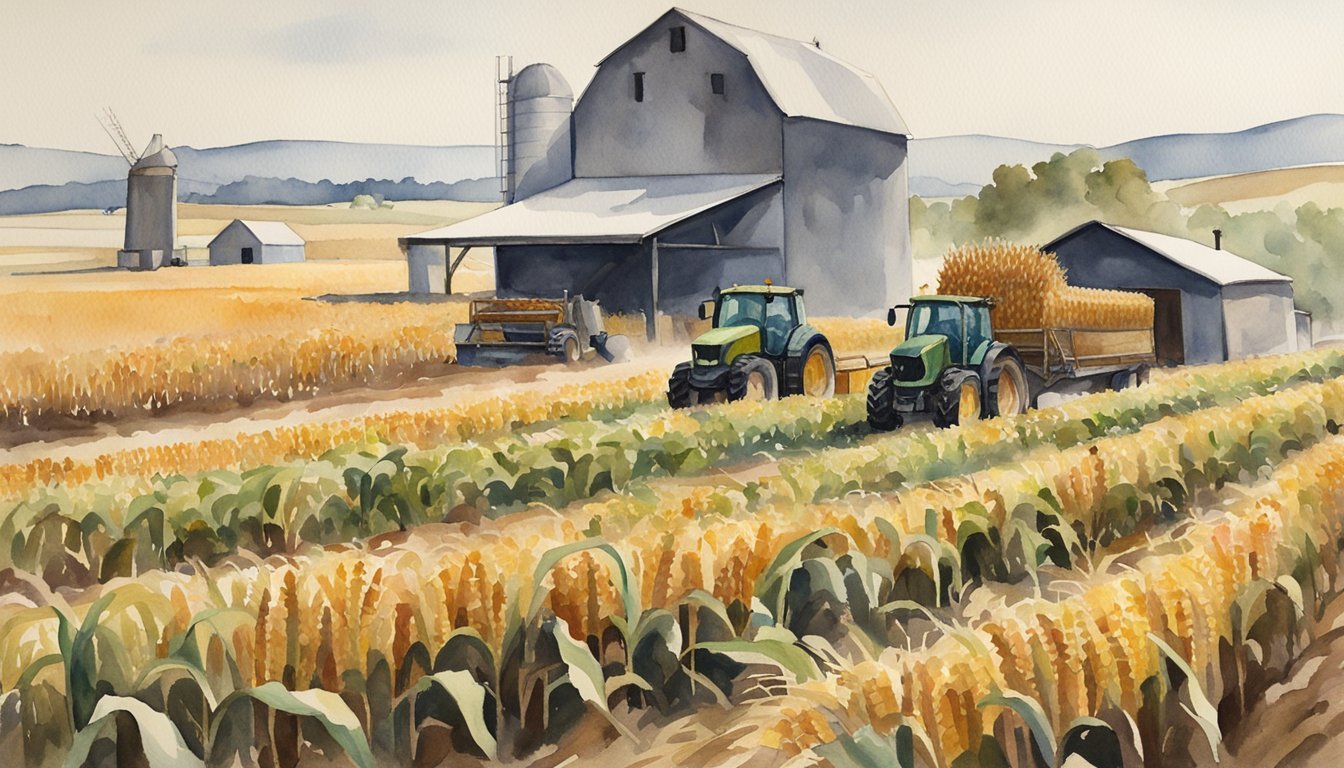What Is Corn?
Corn, also known as maize, is a domesticated plant that plays a significant role in the global food supply. It is remarkable for its versatility and is used in various forms ranging from sweet corn consumed directly off the cob to grain used for livestock feed.
Corn Classification
Corn is a member of the Poaceae family, commonly referred to as the grass family. It is botanically classified as a cereal grain because the corn kernel itself is a type of fruit known as a caryopsis, which means the seed is fused with the fruit wall. However, when corn is harvested while the kernels are in the milk stage and still on the cob, it is regarded as a starchy vegetable. In terms of dietary classification, it is also considered a whole grain when consumed in its entirety.
Nutritional Profile
Corn is a rich source of carbohydrates, with a composition that offers fiber, starch, and natural sugars. It provides essential nutrients like protein, niacin, vitamins, and minerals, as well as being a source of antioxidants including lutein and zeaxanthin. Depending on the variety of corn, the nutritional value can slightly vary, but overall, it contributes beneficially to one’s diet.
Corn Varieties and Uses
There are various types of corn, such as sweet corn, popcorn, flint corn, and Indian corn, each with distinct characteristics and uses. Sweet corn is commonly consumed directly and prized for its sugar content, while popcorn is a variety with a hard outer shell that bursts to form the fluffy snack when heated. Flint corn, or Indian corn, has a hard outer layer and is often used for decorative purposes. Corn is processed into numerous products including corn syrup, cornmeal, corn flour, cornstarch, and corn oil. It also serves as a base ingredient for making tortillas, hominy, grits, and various other culinary staples worldwide.
Corn in the Diet and Industry

Corn is multifaceted in its uses, ranging from nutritional contributions to a myriad of industrial applications. This section explores its comparative dietary value as well as its various culinary and other industry uses.
Comparing Corn with Other Foods
When assessing corn’s role in the diet, it’s important to consider both its nutritional profile and how it stacks up against other staple foods. Corn, notably sweet corn when consumed on the cob, is regarded as a starchy vegetable, rich in fiber, vitamins, and minerals. In particular, it provides B vitamins, potassium, and antioxidants. The grain version of corn is consumed as a whole grain and is a staple in many diets, often compared to other whole grains such as wheat, rice, and oats for its carbohydrate content.
The dietary guidelines for Americans recommend incorporating a variety of protein foods, grains, fruits, and vegetables, including starchy vegetables like corn. Despite its carbohydrate content, corn has a moderate glycemic index, which means it does not spike blood sugar levels as quickly as some other foods. As a whole grain, corn is a healthful addition to a diet, offering more fiber and nutrients than refined grains.
Culinary and Other Applications
Corn manifests in a plethora of culinary applications, spanning from fresh corn on the cob, used as both a staple dish and a side, to processed foods containing corn derivatives like high-fructose corn syrup and starch. Furthermore, the versatility of corn is showcased in its ability to be transformed into flour for bread, popcorn as a snack, and even as decoration in dried form.
In the broader industry, corn goes beyond the table. It’s a principal ingredient in the production of ethanol, a biofuel, which underscores corn’s importance in the energy sector. As animal feed, it remains critical to the agricultural industry, with a significant portion of the corn crop dedicated to feeding livestock. The utility of corn is not just restricted to human food and energy but extends to a variety of other industrial uses due to its byproducts, such as cornstarch, corn oil, and sweeteners.

